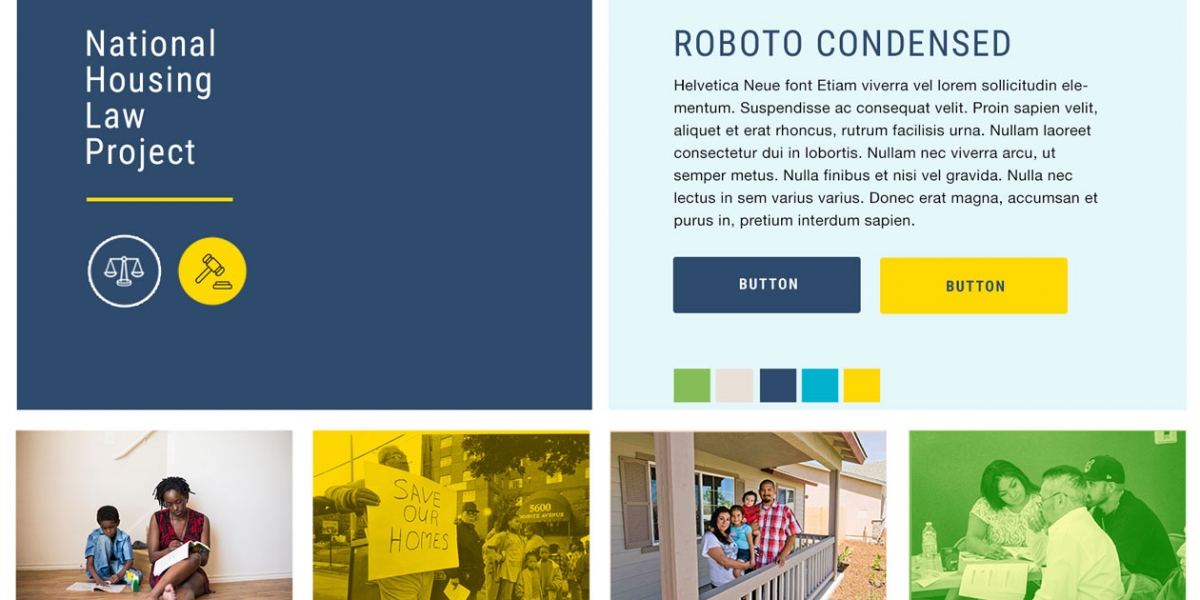A mood or vision board can be a lot of things, but the most successful are small collages that end up feeling a little like an art therapy exercise.
Building a brand is hard.
Mood boarding is a great way to help you and your team build a visual language that both communicates clearly and is engaging to your customers or constituents.
In this post, we’ll walk you through the 4 simple steps to have a strong visual language.
What is a Mood Board?
A mood board is a collection of images, words, fonts and colors that as a collection, are meant to evoke a feeling from the person that views them.
If you’re like most people outside of the design industry, you might not have heard of mood boards, but I am sure you made a collage at some point in your youth…
Mood boards can be created in a lot of different ways.
If you are a more tactile person, you can grab a bunch of magazines and paste (collage) words, images, and color swatches onto a piece of paper. If you feel like your grammer school self, cutting and pasting, you are doing it correctly.
Mood boarding is meant to help open your ability to brainstorm and help you figure out new ways to communicate…well, whatever you are trying to communicate.
Most people spend a lot of time thinking and writing to come up with ideas, mood boarding opens the other side of your brain and engages your visual creativity.
Note: If you like to work digitally, software programs like PhotoShop, Illustrator, PowerPoint or Word can be very useful. Use google search images/fonts or a stock photography website to pull ideas. to be able to collect your pieces and arrange them. Here are some quick tips on creating visual consistency to find online inspiration.
IMPORTANT: Mood boards aren’t website designs. Sometimes people get confused with this.

Why a Create a Mood Board
At Rootid, we use mood boards in our project process to help clients better understand, gain cohesion and communicate their brand.
According to the Content Marketing Institute, brands drive emotions, and emotions drive consumer decisions.
So, since the purpose of mood boards are to generate a gut reaction from the person viewing them, it is an extremely effective way to move through your (re)branding process and/or to check that your branding is properly aligned with your core values and goals.
The bottom line: Pinpointing the emotions that your brand evoke is extremely important. So, spend the time and focus needed to get it right.
How to Create a Mood Board
We usually begin the process by discussing the core values, mission and goals of an organization—isolating keywords or phrases and then visualizing these concepts through collage. Step-by-step instructions below:
Step 1: What are 5-8 short statements or phrases that describe you, your organization or company?
When answering this question, it’s important to focus on individual words or 2-3 words—don’t create long statements, that will not help you isolate and evoke clear and strong feelings.
Step 2: Look for imagery, fonts, colors and textures visually depict your core values.
This is meant to be a conceptual exercise so don’t limit yourself to things you would actually use. Follow your gut. Maybe you see a random image of twig surrounded by bright red leaves. This does not fit into your color palette, you are not an environmental organization, but something about it “feels” right. Use it, the reason why may become more clear when you share you mood board with others.
Step 3: Make a collage.
You can use any tool you want. Scissors and paste, PhotoShop or even Microsoft Word.
The key is that you need to be able to collect, move the pieces around and edit/delete/remove elements as you go.
Begin by grouping like elements together and see if any common themes or patterns begin to emerge. Maybe that is by color or maybe something more conceptual and/or abstract that is based more on a ‘look’ or ‘feel’ that seems to fit together. Again, it is ok (and even good) if you can’t put your finger on why what you are doing seems to be making sense. The more you feel like a kingergartner matching shapes and colors the better.

You may end up with a few different mood boards and this is ok.
Step 4: Take your collages to other people for feedback.
Begin by sharing you mood board without a lot of explanation. Allow the person you are sharing with to discover ideas for themselves, this will help you know if you are communicating your core values clearly. Once they have given you their initial impressions, share your keywords and short phrases—describe what you used and why and see what they say. You do not need to be a color theorist to know if red feels more agressive than blue….feedback from others will help you know if you are on the right track.
Conduct Stakeholder Interviews to Get Feedback
Remember that your mood board and brand are targeting an audience: customers, donors, constituents or whoever else. We have had many clients share their mood boards with those they are serving as well as board memebers or any other stakeholders. The more feedback they got, the better they were able to know whether or not they were communicating effectively.
Our recommendation is conduct stakeholder interviews to ensure your mood boards speak to them. Check out our stakeholder interview guide to make sure you get the information your need.

